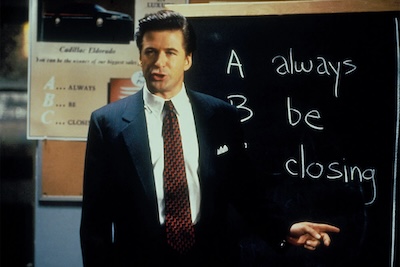For the plethora of journos and critics who worship at the Luca Guadagnino deeply indulgent cinema shrine, there is great reason to revel and rejoice and polish off overused words like iconic and classic. The filmmaker, whose terrific movie Challengers opened earlier this year after pulling out of Venice last year because of the actors strike, has made a frustrating yet fascinating film that seeks profundity. Whether Queer reaches that goal is up the viewer and their threshold for the achingly slow burn.
I have to admit it took me two screenings, in the same day, to reach some kind of less than confusing opinion about this trippy mindfuck of a film. So you may need to indulge my contradictory feelings.
First and foremost, all of the chat about the graphic sex is in Queer is erroneous reportage. Perhaps there was more sex in the earlier cuts (I’ll get to that later), but in the final film screened in Venice there is some sex, yes, but it’s quite tame and those scenes are constantly being cut into or panned away from. Not sure what Guadagnino was trying to accomplish except to reduce any real intimacy between two men onscreen —as he famously did in Call Me By Your Name (cue the chorus of disapproval).
Queer is based on the 1985 Beat generation novella by William S. Burrough (Junkie, Naked Lunch), which the author actually wrote in the early 1950s. Screenwriter Justin Kuritzkes who also wrote Challengers for Guadagnino is fairly faithful to Burroughs in the first half of the pic, but then takes our protags on a super psychedelic cine-journey that is definitely in the spirit of the iconoclastic author (and refreshing detour from glum 1950s Mexico City).
The vignette-y narrative centers on Lee (Daniel Craig) an American exiled to Mexico where he spends his time drinking excessively, shooting up heroine, chatting with his looney, horny friend Frank (a hilarious fat-suited Jason Schwartzman) and fucking as many young men as he can seduce, which appears to be not too many in this cut. One day, literally while watching a cockfight on the Mexico City street, he spots ex-Navy serviceman Eugene Allerton (Drew Starkey) and is completely smitten. But is Eugene queer? The films spends a lot of time wondering that. He does seem to enjoy sex with Lee. But does he have the capacity to love him? Or other men? And why is Lee so obsessed with this ordinary and seemingly indifferent boy?
A bonkers bizarro journey to the jungles of Ecuador infuse the film with much needed energy as our duo pursue a drug called yage, which Lee wants because he thinks it will give him the power of telepathy. What they will discover when they take yage is more like a mirror into their true selves…or so they are told by a idiosyncratic doctor (Lesley Manville delivering a truly brilliant jungle-diva turn).
Queer is both beguiling and exasperating, and maybe it’s meant to be. I don’t mind deliberate-alienation cinema, if there’s a reason for it. And perhaps we are supposed to dwell in Lee’s loneliness, disappointment, dispiritedness, and blue balls in order to fully empathize with him. What would have helped was having a clearer indication of who Eugene was OR simply providing him with more mystery. As written, he’s close to a cypher (until the drug-induced jungle scene).
Also the film felt choppy, and I say this with the knowledge that there were at least 3 reported cuts. The first was over 3 hours. That was the version screened for the Venice selection committee. It was then cut to 2 ½ hours via reported pressure from a producer (a source told me). This final cut runs 135 minutes with some choppy dialogue and scenes beginning or ending abruptly. There are characters that appear once and disappear altogether. Perhaps that initial longer cut will eventually see the light of day.
The one completely positive aspect of the film is Craig’s performance. He, arguably, does career-best work in Queer—although I am partial to Skyfall and still believe he and Judi Dench should have received Oscar nominations for that Bond masterpiece. Here, Craig immerses himself into the headspace of an outcast who refuses to live his life concerned with what others think of him. In many ways, the character is a true queer trailblazer, considering the time period.
Circling back to queer sex onscreen, I realize just how fearful people are about it. At both my screenings I watched attendees leave during some of those allegedly daring (but, in reality, quite tame) sexual moments. Yet Guadagnino appears to have a Gen-Z meets Italian-Catholic approach to depicting queer sex onscreen.
At the Venice press conference, the director proudly stated, “I can count on two hands the lovers I had in my life.” I can’t help but think this attitude is loaded with judgment, and that carries over into his films in a non-queer sex positive manner. It’s obvious in the way he films sex between men, especially in the actual intercourse moment in Queer which came across more detached and straightforward and than sensual or erotic.
Burroughs is a very controversial figure when it comes to the queer canon since he dissociated himself from the gay movements and even from being gay. So maybe Guadagnino’s approach is in keeping with the author’s spirit. But let’s be clear, if you want real, believably hot, titilating, erotic sex depicted between two men onscreen, stream James Ivory’s Maurice or Andrew Haigh’s All of Us Strangers or Ira Sachs’s Passages. Not Queer.









